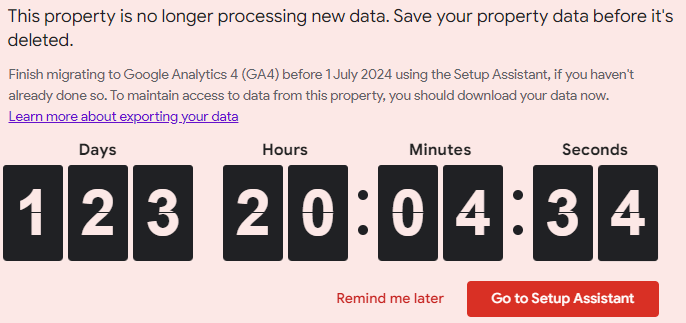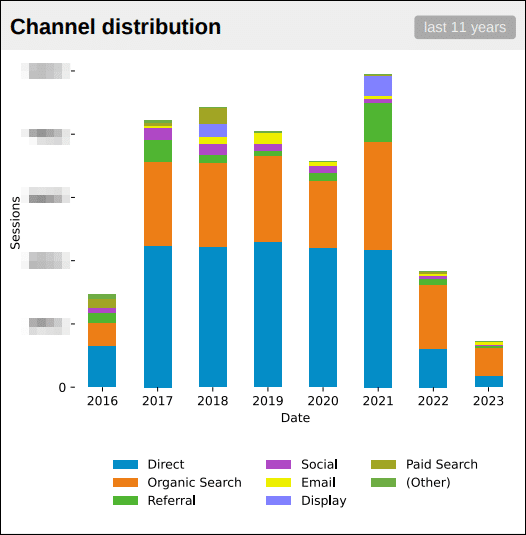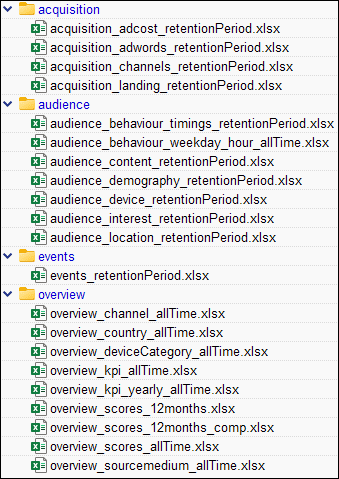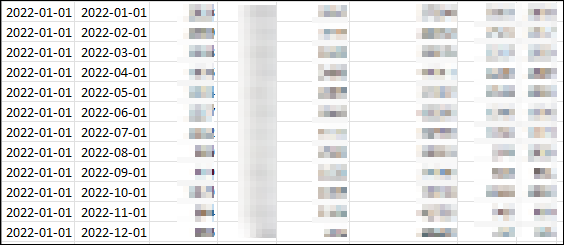If you happened to log into your old Google Analytics 3 account recently, perhaps to briefly to mourn analytics data you could understand, you might have noticed a warning, similar to this:
When I first stumbled across it, I ignored it.
I knew that the old Google Analytics 3 stopped collecting data months ago, so thought that it had no use. And comparing the old data with the new data was next to impossible, as the new formats and even metrics are quite different.
My business partner, Aaron, brought this to my attention, and initially I thought we should just let the data die.
But then it started to niggle me.
The problem with throwing the data away is simple. Once it’s gone, it’s gone.
For someone who keeps cables to all my old devices (even if the product or company no longer exists), this is a problem.
And I have to admit to a slight fear of future me kicking myself for not keeping the old data. And cables.
While debating the issue, Aaron asked me if I could think of a scenario where a business might need old data.
The first thing that popped into my mind was the future sale of a business. The new owners might be interested in looking at historical data that went beyond what’s in the new GA4 accounts. And having that data might even raise the value of the company.
And that was enough. I’m sure there are other scenarios where having old data to hand might be useful or even vital. But there was no need to even consider them.
Having the old data makes perfect sense.
Throwing away the old data absolutely doesn’t.
So we briefly looked at how we can export the data from within the Google Analytics account.
This was predictably painful and complex, and the resulting exports were as good as useless.
We then went looking at software, tools and services that were out there. This soon became complex and some of the options were extremely expensive.
Then we came across the well-named product GA3-exporter.
I’m not going to go into a detailed review of what they offer, but I will bring a few of the important points to your attention.
Pricing
This is an incredibly low cost option. For any website with more than 100,000 visitors a year, the price is $139. For websites under 100,000 this drops to $79.
Note that this isn’t a subscription. It’s a one-time payment. And that’s before our discount; more of that later.
What you get
A lot. The $139 package gets a full PDF report, Excel exports (more than 20 data sets), BigQuery report and more.
But this is where things start to get a little tricky.
If you’re hoping to export absolutely everything from your old Analytics, you can’t.
And I think that’s reasonable. Think how many options there are in the left hand side, then the variations of each that are available. Then think of all these exported on a daily basis.
Even if it were possible, exporting everything would produce a staggeringly huge file, that wouldn’t be in any way usable. I don’t even know what format it would be in, but it would certainly exceed Excel’s limitations.
So what GA3 exporter do is let you export what they feel is the most important information.
The PDF report
I didn’t really like this. Ultimately, summarising eleven years of data into a 13 page document is an impossible task.
For example, what can you really do with a bar chart showing channel distribution over 11 years:
But for some people this may be enough.
I suspect, however, that more people will be interested in the Excel reports.
When I ran the report, I quickly received a zip file:
The naming is quite clear, and GA3-exporter have a detailed list of what each contains.
When I initially opened each spreadsheet to have a look, the contents weren’t pretty.
Which is only to be expected in a raw spreadsheet.
One of the things that does matter, however, is the formating. And in this case it seemed very clean and required no cleanup.
Here’s a screenshot of what a small section from one of the spreadsheets looked like, in this case the overview_kpi_allTime.xlsx file.
This was looking at the monthly data for the whole of 2022:
I noticed that the date format seemed to be in YYYY-MM-DD, but this didn’t cause me any problems.
I then created a basic chart in Excel, plotting the number of users against the date:
When I compared the same data with the chart in Google Analytics:
As far as I could see, the figures matched perfectly. And looking at the data in the spreadsheets confirmed this.
Conclusion
I didn’t go into each and every spreadsheet to compare the data with what Google Analytics recorded at the time.
But I did carry out some random data comparisons, and as far as I could tell, everything seemed to match perfectly.
The bottom line here, in my opinion, is that there is nothing to weigh-up here. It’s a real no-brainer.
Setting their system loose on your data couldn’t be simpler. It literally took a few seconds to set it up.
And there’s nothing to install locally, no recurring fees, and a very low cost.
For the amount of time and money involved, I would recommend that anyone with Google Analytics 3 data signs up for this and grabs a copy of their data immediately.
It may not be as well presented as it was in Google Analytics 3, and may not contain every single thing you wish you could keep. But it does seem to contain most of the data that most businesses would want. And some of your data, in my opinion, is a better option than none.
Given the low price and ease of use, I don’t think you should hesitate. More so considering the fact that GA3-exporter have given us a very generous 20% discount, for every first package and agency package. But this is only valid until 10th of April 23:59 PDT.
The 20% discount code: softwarepromotions20
Note that we don’t get any sort of reward or kickback for you purchasing. This was offered, but we declined. The product is strong enough to sell itself.
My advice would be, while the code still works, is to just buy it and use it today.
Happy archiving.
Unique ideas for your business
The Demystifier puts practical ideas into your hands. You won't find them elsewhere. Original, actionable and insanely effective.








